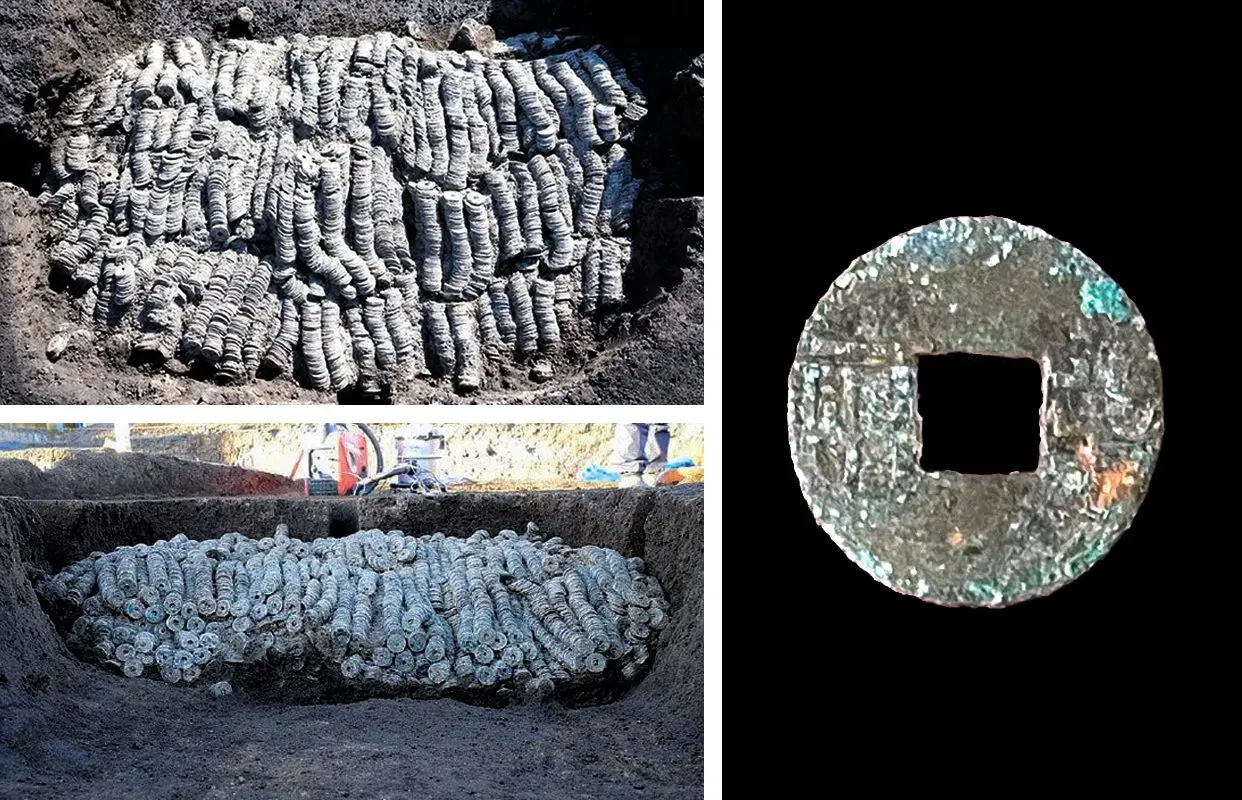Archaeologists have uncovered over 100,000 ancient coins during excavations in Maebashi City, Japan.
The discovery was made during construction works of a new factory in Sojamachi district, where a cache of over 100,000 coins was found in 1,060 bundles.
According to the researchers, an analysis of 334 coins in the cache shows a “remarkable diversity”, encompassing 44 distinct currency types.
The coins have origins that mainly span from China’s Western Han Dynasty to the Southern Song Dynasty, with the most notable being Ban Liang coins. Ban Liang coins were introduced by the first emperor, Qin Shi Huang, as China’s first unified currency around 210 BC, and continued to be used under the Western Han dynasty until they were replaced by the Wu Zhu cash coins in 118 BC.
The oldest of the Ban Liang coins has been dated to 175 BC and has a diameter of 2.3 centimetres, a 7-millimetre square hole in the centre, and is inscribed with “liang” (an old Chinese unit of weight) on the left and “ban” on the right.
The most recent coin in the cache dates from AD 1265 during the Southern Song Dynasty period. At this time, the Song Dynasty lost control over its northern territory to the Jurchen-led Jin dynasty during the Jin–Song Wars, resulting in the Song court retreating south of the Yangtze River and founding a new capital in Lin’an (now known as Hangzhou).
According to an announcement by the Maebashi City Government, the coins were likely hidden for security during the Kamakura jidai, a period that marks the governance by the Kamakura shogunate in AD 1192.
The Kamakura jidai was a turbulent time that saw a series of conflicts against the Northern Fujiwara and invasions by the Mongols. This period is also known for the emergence of the samurai, the warrior caste, and for the establishment of feudalism in Japan.
The coins are being displayed in the “Newly Excavated Cultural Artefacts Exhibition 2023” in Maebashi City’s Otemachi district.
Header Image Credit : Maebashi City Government





